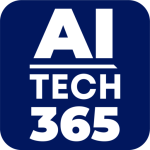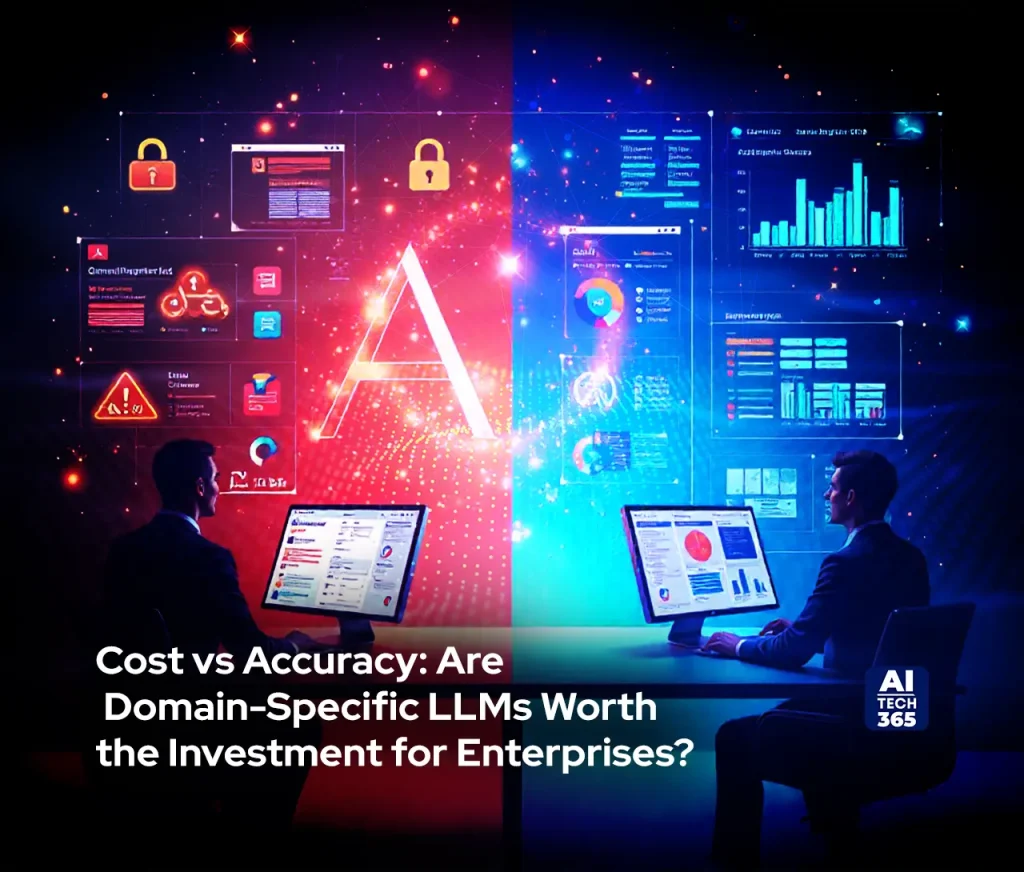Do you remember the excitement around GPT-5, Gemini, and other general-purpose AI tools? Everyone thought they could plug them in and get instant results. At first, it worked, but reality hit fast in areas like law, healthcare, and finance. General models are quick and cheap, but they often miss important details and compliance rules.
Some teams turn to specialized models for that reason. These are trained on carefully chosen data and produce answers that stick closer to reality. They cost more upfront and need ongoing work, but they actually get the job done.
Picking one is not just a tech decision. It is a business decision. You have to weigh the cost of mistakes, fines, or poor choices against the cost of doing it right.
The upside is huge. Millions of new jobs are expected this decade. Programs like AI Transformation of Industries show how companies can move from experiments to scaled deployment. Reports also show how combining AI with other technologies creates lasting value.
Deconstructing the ‘Domain-Specific’ Advantage
Not all AI is the same. General LLMs pull from broad internet data. They can answer most questions and generate creative content. They are flexible, but when details matter, they often fall short. A story might work, but a legal clause or a medical term could get messy.
Domain-specific LLMs are built differently. They are trained on focused, high-quality data such as legal briefs, pharmaceutical research, or internal financial reports. They understand the language experts use and catch nuances that general models miss.
Three factors make them stronger. First, precision. They can interpret specialized jargon without guessing. Second, privacy. They can run inside secure environments, keeping sensitive data within the organization. This is crucial for rules like HIPAA and GDPR. Third, reliability. Their outputs are anchored to trusted sources, reducing errors and hallucinations.
Regulators are paying attention. The FTC is investigating AI chatbots acting as companions. Its 6(b) report on AI partnerships and fines against Workado and DoNotPay show that sloppy AI is not acceptable. Domain-specific models naturally fit these expectations because they are precise, controlled, and accountable.
In the end, domain-specific LLMs are not just smarter. They are safer, more reliable, and built to deliver real results. If your AI cannot prove that, it is just noise.
Also Read: How AI Storytelling is Revolutionizing marketing in 2025
The True Cost of Specialization in CAPEX and OPEX
Building a domain-specific LLM comes with a price. The initial investment, or CAPEX, is heavy. Data preparation is often the largest non-compute cost. Cleaning, labeling, and curating specialized datasets is labor-intensive. Without this foundation, your model will be inaccurate and unreliable.
Training and fine-tuning follow. Full fine-tuning requires expensive GPU hours but delivers high performance. Parameter-Efficient Fine-Tuning, like LoRA or QLoRA, provides a cheaper alternative while still achieving strong results. Then comes infrastructure. Setting up MLOps pipelines for deployment, monitoring, and scaling adds another layer of cost, but it ensures the model actually works in the real world.
Operational expense, or OPEX, is where long-term savings can appear. Running a self-hosted model 24/7 may seem costly, but for high-volume enterprises, a smaller, optimized domain-specific LLM can be cheaper than paying per-token fees for a large generalist API. Maintenance is ongoing. Models drift as domain knowledge evolves, requiring retraining and monitoring. Skipping this step is risky; your AI becomes less reliable over time.
Regulators and economic observers are noticing AI’s workplace impact. The Fed’s February 2025 note showed AI adoption among workers at 20 to 40 percent, especially in tech. Governors highlight AI’s role in productivity and economic research, with tools like the AIR Index tracking firm-level AI R&D intensity. Even the Financial Stability Report emphasizes that technology-driven risk is real, underlining the importance of careful, controlled AI deployment.
Specialization costs upfront, but the payoff is control, precision, and reliability. Enterprises that invest wisely in CAPEX and manage OPEX can deploy AI that not only works but earns trust. Cutting corners may save money today, but it creates hidden costs tomorrow. Domain-specific LLMs demand investment, but they deliver real, actionable, and sustainable value.
Quantifying Accuracy Uplift through Performance and Risk
Accuracy matters more than most people think. Standard benchmarks like MMLU tell you how much a model knows in general, but they rarely show how it performs in situations where mistakes cost money or reputation. In real-world tasks, F1 scores, precision, and recall are far more relevant. They measure not just whether the answer is right, but whether it is consistently right.
Getting it wrong can be expensive. Miss a clause in a contract and a legal dispute could follow. Miscode a diagnosis and a patient’s safety or a hospital’s billing can suffer. Misread a financial filing and compliance penalties are waiting. These are not minor errors but they are real risks with real consequences.
This is where domain-specific LLMs shine. By learning from carefully chosen, high-quality data, they understand context and jargon in ways general models cannot. They give answers that are more reliable and consistent. Hallucinations drop, and outputs stick closer to reality. For organizations, that reliability is often more valuable than creativity.
AI’s impact goes beyond individual companies. The IMF in 2025 noted that AI adoption can increase inequality, favoring more advanced economies. It also puts pressure on electricity grids, though projected global GDP gains of 0.5 percent per year from 2025 to 2030 outweigh the added energy cost. Interestingly, productivity gains hit low-skilled workers harder, around 34 percent, while highly skilled workers saw smaller boosts.
In high-stakes work, precision is not optional. Domain-specific LLMs reduce risk, deliver actionable answers, and provide real-world value. If your AI cannot do that reliably, it is just noise.
The Return on Investment (ROI) Framework
ROI isn’t just a number on a spreadsheet. For AI, it’s about efficiency and risk reduction. The basic formula is simple: ROI equals business gains minus AI costs, divided by AI costs. But the real insight comes from breaking down what ‘business gains’ actually mean.
First, time savings. Automating repetitive, complex tasks like document classification frees up teams to focus on higher-value work. Second, error reduction. Fewer mistakes in compliance or review cycles save money and protect reputation. Third, innovation. Domain-specific LLMs enable new products and services that would have been impossible before, giving organizations a strategic edge.
When does a DSLLM make sense? Ask three questions. Is compliance critical? If you operate in heavily regulated sectors, accuracy and governance cannot be compromised. Is the volume of specialized queries high enough to justify the investment? And does proprietary data provide a competitive advantage? If the answer is yes to all three, a domain-specific model is likely worth the cost.
Real-world data supports this. McKinsey estimates a $4.4 trillion opportunity from enterprise AI productivity. Their research shows AI accelerating R&D could unlock $360-560 billion per year. Yet adoption gaps remain: about 80 percent of companies’ report using the latest AI, but many see minimal gains. Their report, Seizing the Agentic AI Advantage, highlights that moving from pilots to scalable systems is key.
In short, ROI isn’t theoretical. It comes from careful measurement, targeted investment, and strategic use of AI where it truly matters. A domain-specific LLM can deliver measurable value if applied wisely, turning efficiency and risk reduction into tangible business results.
Strategic Pitfalls and Maximizing Long-Term Value
Even the smartest AI can mess up if you’re not careful. One common trap is overfitting. Train it too narrowly, and it works for a few things perfectly but struggles with anything new. A good approach is to mix it with a general model. Let one handle the big ideas and the other deal with the details.
Then there’s the choice between fine-tuning and just pointing the AI to the right sources. Sometimes just feeding it the right information is enough. Full fine-tuning is worth it only when style or complex reasoning really matters.
Where you run your model matters too. Sticking to one vendor can be convenient but expensive over time. Open-source options give more freedom and let you adjust as you go.
The key is balance. Keep your AI flexible, useful, and under your control. Avoid overfitting, choose the right approach, and think long term. That’s how you get real value.
Specialization as the New Baseline
Here’s the truth. Paying for a specialized model is not just spending money. It buys reliability, safety, and a real edge. In high-stakes work, you can’t afford sloppy results. You need something that actually understands the details and delivers consistent answers.
Soon, specialization won’t be a bonus. It will be expected. Companies that ignore this shift will fall behind. The advantage comes from smart data choices and real domain knowledge, not just throwing more computing power at the problem.
Think of expertise and well-structured data as assets. Build on a solid foundation, focus on getting it right, and plan for the long game. In AI, being specialized isn’t optional. It’s just how you survive and win.

